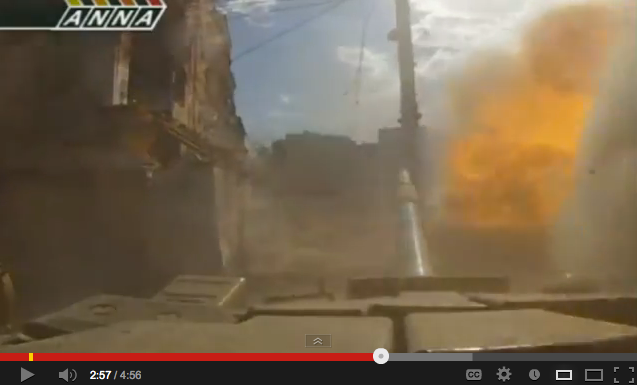This is the latest DASD program support report. Here are the highlights from the report.
Afghanistan
In 3rd quarter FY13 there were approximately 101.8K DoD contractors in Afghanistan. The overall contractor footprint in Afghanistan decreased by 5.5% from 2nd quarter FY13.
The contractor to military ratio in Afghanistan is 1.43 to 1 (based on 71.5K military as of June 7, 2013).
There will be substantial contractor reductions over this fiscal year, as a result of base closures, the return to expeditionary standards, and transition of security to the APPF.
Local Nationals (LN) currently make up 36.7% of the DoD contracted workforce in Afghanistan. The use of LNs remains important to COIN strategy.
The big one in Afghanistan is that there are more contractors than military folks there. It’s a contractor’s war now and local nationals make up a huge portion of that work force.
Iraq
In 3rd quarter FY13, the total number of contractors supporting the U.S. Government in Iraq (DoD + DOS) was approximately 10.3K. There will be substantial contractor reductions in 2013 reflecting consolidation of sites, completion of ongoing activity, and increased utilization of host country service and labor.
The DoS and DoD continue to refine the requirements for contract support. Some contractor personnel employed under DoD contracts are supporting State Department and other civilian activities under the Chief of Mission, Iraq. These DoD contractors are provided on a reimbursable basis.
In Iraq, the name of the game is DoD and DoS working with one another and using each other’s resources in order to accomplish the mission. Which makes sense because the former military resource everyone depended upon is gone, so now it’s all about supporting one another with the limited resources that are there.
The other thing to factor into the contractor equation is all the turmoil going on throughout these regions. For Iraq, Syria is being closely watched and monitored. The current presence in Iraq is vital for that mission and contractors will be very much in need to secure that effort and supply the beans/bullets/bandages.
Not to mention that as Al Qaeda gets stronger in Syria, they will be taking that capability back into Iraq to clean house. The raids they are doing in Syria and becoming more complex and bold and they are using that knowledge and applying it in Iraq. As a result, Iraq is definitely seeing a pick up in violence and complex attacks. A great example is the recent prison assault at Abu Ghraib in which 500 Al Qaeda prisoners escaped as a result. But check out how they did it.
Monday’s attacks came exactly a year after the leader of al Qaeda’s Iraqi branch, Abu Bakr al-Baghdadi, launched a “Breaking the Walls” campaign that made freeing its imprisoned members a top priority, the group said in a statement.Sunni Islamist militants have in recent months been regaining momentum in their insurgency against Iraq’s Shi’ite-led government, which came to power after the U.S. invasion to oust Saddam Hussein.The group said it had deployed suicide attackers, rockets, and 12 car bombs, killing 120 Iraqi guards and SWAT forces in the attacks in Taji, north of Baghdad, and Abu Ghraib, the prison made notorious a decade ago by photographs showing abuse of prisoners by U.S. soldiers.Interior ministry and medical sources said 29 police and soldiers were killed, and 36 wounded.
12 car bombs? That is quite the assault! (the Taliban were able to release 400 prisoners in the Sarposa prison escape.)DoS is concerned about the surge in violence as well. Here is a quote.
The attacks on the prisons at Abu Ghraib and Taji were carefully synchronized operations in which members of the Qaeda affiliate used mortars to pin down Iraqi forces, employed suicide bombers to punch holes in their defenses and then sent an assault force to free the inmates, Western experts said.
“We are concerned about the increased tempo and sophistication of Al Qaeda operations in Iraq,” said a senior State Department official, who requested anonymity because he did not want to be seen as commenting on Iraq’s internal affairs.
The use of mortars is interesting and we saw this weapon used in the Benghazi attack. An effective mortar team can do a lot of damage very quickly if they are able to get in close and have the targeting data.
I wanted to bring these examples up in this post because it is relevant to contractor usage. With increased danger comes more dependence on solid security and defenses. If we want a presence in Iraq to monitor Syria or Iran or the internal developments in Iraq, then security contractors and support will be needed to continue that mission. Or we could pull out altogether….or send troops back in, and I don’t think neither of these options are of national interest.
For Afghanistan, the Taliban will continue to apply the pressure as more troops pull out. They will also do all they can to test the government and show how ineffective they are by making things more chaotic and dangerous. Much like what is going on in Iraq now. Contractors will be there to fill the vacuum left by these departing troops and they will have to deal with this increased danger. (contractor deaths are up to 3357 as of June)
Contractors will continue to train, continue to finish building projects, and continue as normal. We are essential to the massive logistics game of leaving Afghanistan as well. From breaking down camps or equipment deemed too costly to ship, or supporting those who are left, contractors will keep the machine running. –Matt
